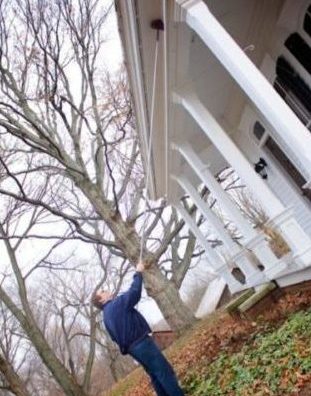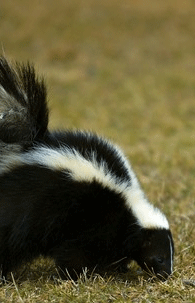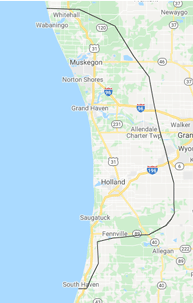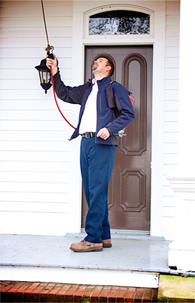Skunks & Raccoons
Skunks
What do Skunks look like?
The skunk is a nocturnal mammal that has jet black hair with prominent, white stripes that run down its back. It has short, stocky legs and large feet equipped with well-developed claws. The body of the striped skunk is about the size of an ordinary house cat weighing about 8 pounds. (Image © Geoffery Kuchera/Dreamstime.com)
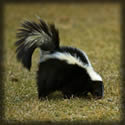
What do Skunks eat?
What about their babies?
Do Skunks hibernate?
What makes a Skunk a pest?
Skunks dig holes in lawns, golf courses, and gardens to search for insect grubs. Digging normally appears as small holes or patches of upturned dirt. They may burrow under porches or buildings by entering foundation openings. Garbage left outdoors may be raided by skunks.
Skunks discharge musk from the anal gland, are capable of firing several shots, and can spray 10 – 15 feet with amazing accuracy. Prior to spraying they usually give a warning by stomping their feet. Odor is not always a reliable indicator of the presence of skunks. Sometimes dogs, cats, or other animals that have been sprayed by skunks move under houses and make owners mistakenly think skunks are present.
Skunks that become a regular danger or nuisance need to be carefully live-trapped and removed. This should be left to a professional to avoid being sprayed.
Here is a recipe you can make at home, which is very effective against skunk odors. Apply the mixture directly to the sprayed surface. DO NOT store the mixture in plastic bottles.
- 1-quart of 3% Hydrogen Peroxide
- 1/4 cup of Baking Soda
- 1 teaspoon of Liquid Soap
- Wash while it is bubbling…rinse off with tap water.
Raccoons
What does a Raccoon look like?
The raccoon is nocturnal stocky mammal about 2 to 3 feet, weighing 10 to 30 pounds. It is distinctively marked, with a prominent black “mask” over the eyes and a heavily furred, ringed tail. The “coon” is a grizzled salt-and-pepper gray and black, although some individuals are strongly washed with yellow. (Photo 30872231 © Brian Kushner/Dreamstime.com)
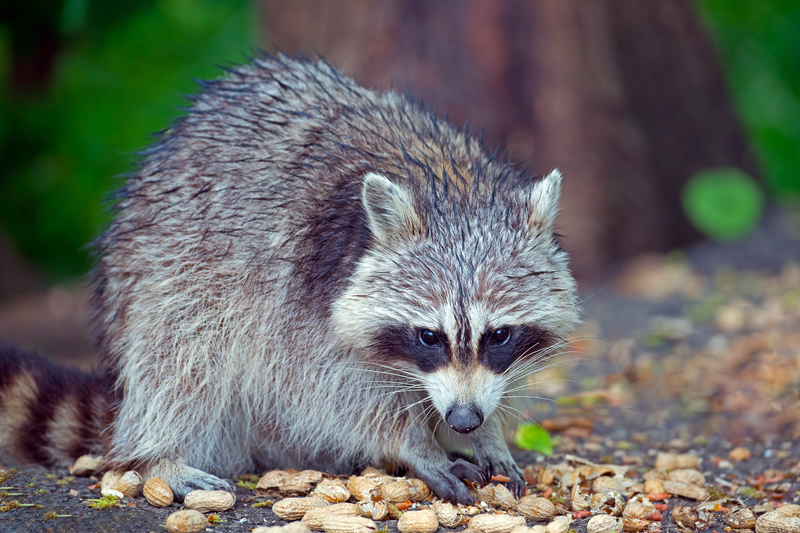
What do Raccoons eat?
What about their babies?
Do Raccoons hibernate?
What makes a Raccoon a pest?
Garden crops are often raided (especially sweet corn), as are garbage cans. Raccoons will roll sod for worms, grubs, and insects.
Raccoons carry ecto-parasites such as fleas, mites, and ticks. They are also host to more serious diseases like raccoon roundworm and rabies. In addition, they can be very aggressive when trapped or threatened. Trapping and removal of raccoons should be left to a professional.

